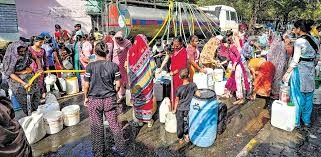As Delhi battles one of its harshest summers in recent memory, with temperatures soaring past 45°C and water scarcity looming large, a quiet but powerful movement is taking shape across the city. From local shopkeepers to resident welfare associations and religious institutions, citizens are setting up free water stations—known locally as pyau—to offer relief to pedestrians, delivery workers, and the homeless.
This grassroots response is not just a testament to Delhi’s resilience but also a reminder that in times of crisis, compassion often flows faster than policy.
Key Highlights from the Ground
- Hundreds of free water kiosks have sprung up across markets, metro stations, and traffic intersections in areas like Karol Bagh, Lajpat Nagar, and Seelampur
- Volunteers are distributing cold water, ORS sachets, and lemon shikanji to passersby during peak afternoon hours
- Sikh gurdwaras and Hindu temples have opened their langar kitchens to provide chilled buttermilk and water to the public
- RWAs in Dwarka and Rohini have installed large earthen pots and dispensers outside gates, refilled daily by residents
Why This Matters Now
- Delhi is facing a dual crisis of extreme heat and water shortage, with the Delhi Jal Board reporting a 20 percent drop in supply from key sources like the Yamuna
- The city’s piped water network, though extensive, fails to reach many unauthorized colonies and JJ clusters
- Water tankers are being rationed, and the government has urged citizens to conserve water and avoid wastage
Government and Civic Response
- The Delhi government has launched a pilot project to install 20 water ATMs at public spaces through CSR partnerships
- These standalone units will include RO systems, real-time water quality monitors, and GPS tracking for maintenance
- Plans are underway to scale up to 5,000 water ATMs citywide, with priority given to high-footfall areas like hospitals, bus terminals, and markets
- The Delhi Jal Board has invited private firms to participate in the initiative, offering advertising rights to offset operational costs
The Bigger Picture: Equity and Access
- While the AAP government’s free water scheme provides 20,000 litres per household per month, it is under review and may soon be restricted to low-income areas
- Critics argue that the scheme’s universal rollout has led to misuse in affluent colonies, while the most vulnerable still rely on tankers and community taps
- The current crisis has reignited calls for targeted subsidies, better billing systems, and decentralized water governance
What Lies Ahead
- With the monsoon still weeks away, Delhi’s water stress is expected to intensify
- Citizen-led efforts may inspire more structured community water-sharing models
- The success of the water ATM pilot could determine the future of public hydration infrastructure in Indian cities
In a city often divided by class and chaos, these free water stations are stitching together a fabric of shared humanity—one glass at a time.
Sources: India TV News, Times of India, The New Indian Express, NCR Guide, Delhi Jal Board Circulars June 2025, MSN India

